Sar's partner, the equally lovely Mark, made sure I could find Kings Cross station the following morning, to take the train to a job interview in Peterborough. My train left from platform 9a, just up from Platfrom 9 & 3/4. Truly.
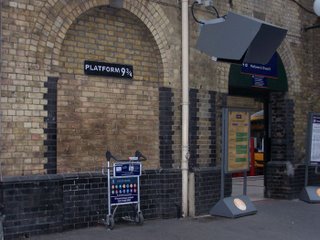
I didn't get the job (failed to 'sparkle' in that necessary way. Maybe next time, a little less red wine the night before...). But Peterborough was a beautiful town and I'm so pleased I went. The cathedral there is amazing - first built as a Christian church and abbey by the Mercian king Peada and his sisters Kyneburgha and Kyneswytha. It was later razed by the Danes in 870 - a stone carving, called the Monks' Stone, still commemorates the brothers who died during the invasion.
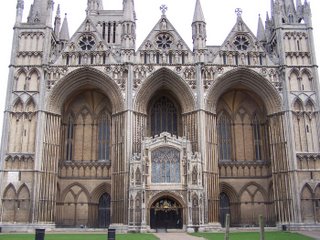
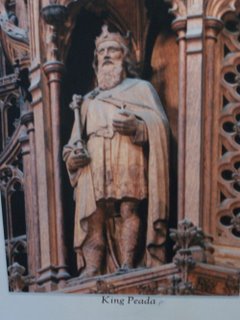
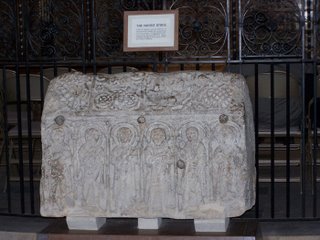 Above - the cathedral front, a statue of King Peada, and the 8thC Monk's Stone
Above - the cathedral front, a statue of King Peada, and the 8thC Monk's StoneRebuilt in the early 10th century, heaven help the poor soul who accidentally burnt it down again in 1116 (that is ONE BIG CANDLE to leave burning!). So the cathedral as it stands today was actually the third to occupy the site, constructed between 1118 and 1238. It contains a host of apparently unique architectural features, such as one of the last surviving painted wooden ceilings, and a series of 'ceiling fans' at the top of columns in the 'new church' added around 1500.
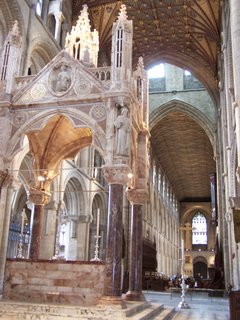
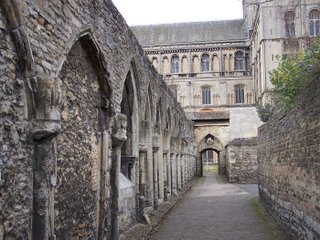 Above - Interior, and the ruins of the cloister
Above - Interior, and the ruins of the cloisterThe monks who lived cloistered there were Benedictines, up to 120 of them at their peak, and an exhibit inside details how their order was organised and their daily routines. One of the most famous was the Abbot Benedict, who witnessed the murder of Thomas Becket (you can read his account here) and brought with him to Peterborough two vials of the martyr's blood, and a piece of his bloodstained robe, as holy relics. Benedict, abbot from 1177-93, is buried in the main church, near the altar.
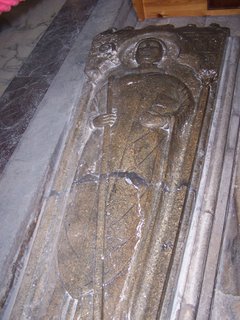
Years later, Katherine of Aragon, the first of Henry VIIIs six wives, was buried there after her death in 1536. A black marble tomb and wrought iron sign marks her burial place, along with an account of her life, her education (the scholar Erasmus described her as 'a miracle of female learning'), her founding of schools for girls and her avowed belief that she was Henry's one true wife.
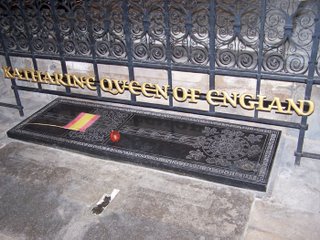
In all, I've never seen a place combine modern worship with a secular discussion of the history of a building with such aplomb. If ever you're travelling by train from London to York/Edinburgh, stop off for a look.

1 comment:
Hiya
Yep i reckon the bloke who burnt it down was probably one of the ones either strangled immediately or worked his fingers to the bone rebuilding hehe
Sounds bloody fantastic...
Keep up the fabbo commentary too!
hugs
Dave n Jainee
Post a Comment